9.4: Perimeter and Circumference of Geometric Figures
- Page ID
- 48888
Learning Objectives
- know what a polygon is
- know what perimeter is and how to find it
- know what the circumference, diameter, and radius of a circle is and how to find each one
- know the meaning of the symbol ππ and its approximating value
- know what a formula is and four versions of the circumference formula of a circle
Polygons
We can make use of conversion skills with denominate numbers to make measurements of geometric figures such as rectangles, triangles, and circles. To make these measurements we need to be familiar with several definitions.
Definition: Polygon
A polygon is a closed plane (flat) figure whose sides are line segments (portions of straight lines).
Polygons



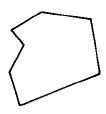
Not polygons




Perimeter
Definition: Perimeter
The perimeter of a polygon is the distance around the polygon.
To find the perimeter of a polygon, we simply add up the lengths of all the sides.
Sample Set A
Find the perimeter of each polygon.
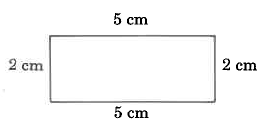
Solution
\(\begin{array} {rcl} {\text{Perimeter}} & = & {\text{2 cm + 5 cm + 2 cm + 5 cm}} \\ {} & = & {\text{14 cm}} \end{array}\)
Sample Set A
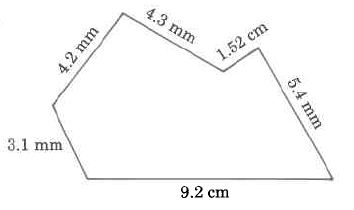
Solution
\(\begin{array} {rcr} {\text{Perimeter}} & = & {\text{3.1 mm}} \\ {} & & {\text{4.2 mm}} \\ {} & & {\text{4.3 mm}} \\ {} & & {\text{1.52 mm}} \\ {} & & {\text{5.4 mm}} \\ {} & & {\underline{\text{+ 9.2 mm}}} \\ {} & & {\text{27.72 mm}} \end{array}\)
Sample Set A
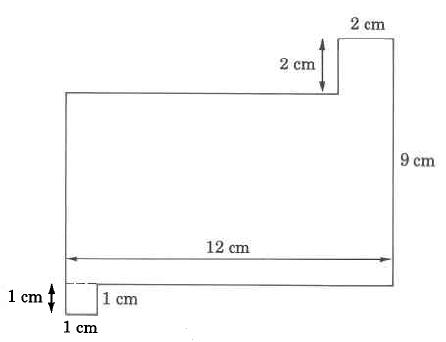
Solution
Our first observation is that three of the dimensions are missing. However, we can determine the missing measurements using the following process. Let A, B, and C represent the missing measurements. Visualize
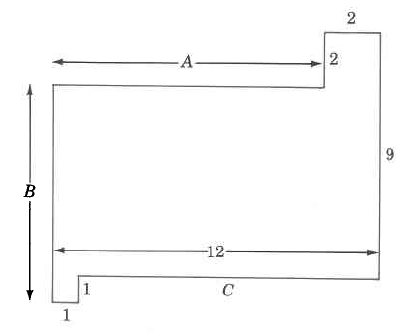
\(\text{A = 12m - 2m = 10m}\)
\(\text{B = 9m + 1m - 2m = 8m}\)
\(\text{C = 12m - 1m = 11m}\)
\(\begin{array} {rcr} {\text{Perimeter}} & = & {\text{8 m}} \\ {} & & {\text{10 m}} \\ {} & & {\text{2 m}} \\ {} & & {\text{2 m}} \\ {} & & {\text{9 m}} \\ {} & & {\text{11 m}} \\ {} & & {\text{1 m}} \\ {} & & {\underline{\text{+ 1 m}}} \\ {} & & {\text{44 m}} \end{array}\)
Practice Set A
Find the perimeter of each polygon.
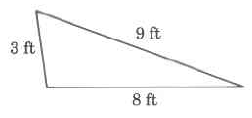
- Answer
-
20 ft
Practice Set A

- Answer
-
26.8 m
Practice Set A
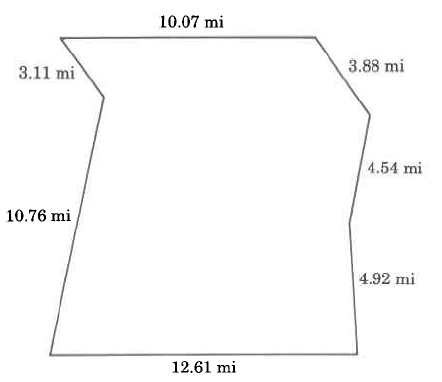
- Answer
-
49.89 mi
Circumference/Diameter/Radius
Circumference
The circumference of a circle is the distance around the circle.
Diameter
A diameter of a circle is any line segment that passes through the center of the circle and has its endpoints on the circle.
Radius
A radius of a circle is any line segment having as its endpoints the center of the circle and a point on the circle.
The radius is one half the diameter.
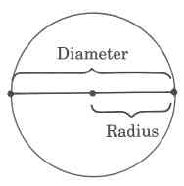
The Number \(\pi\)
The symbol \(\pi\), read "pi," represents the nonterminating, nonrepeating decimal number 3.14159 … . This number has been computed to millions of decimal places without the appearance of a repeating block of digits.
For computational purposes, \(\pi\) is often approximated as 3.14. We will write \(\pi \approx 3.14\) to denote that \(\pi\) is approximately equal to 3.14. The symbol "≈" means "approximately equal to."
Formulas
To find the circumference of a circle, we need only know its diameter or radius. We then use a formula for computing the circumference of the circle.
Formula
A formula is a rule or method for performing a task. In mathematics, a formula is a rule that directs us in computations.
Formulas are usually composed of letters that represent important, but possibly unknown, quantities.
If \(C, d\), and \(r\) represent, respectively, the circumference, diameter, and radius of a circle, then the following two formulas give us directions for computing the circumference of the circle.
Circumference Formulas
- \(C = \pi d\) or \(C \approx (3.14) d\)
- \(C = 2 \pi r\) or \(C \approx 2 (3.14) r\)
Sample Set B
Find the exact circumference of the circle.
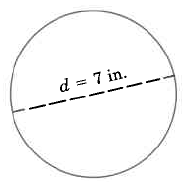
Solution
Use the formula \(C = \pi d\).
\(C = \pi \cdot 7\ in.\)
By commutativity of multiplication,
\(C = 7\ in. \cdot \pi\)
\(C = 7 \pi in.\), exactly
This result is exact since \(\pi\) has not been approximated.
Sample Set B
Find the approximate circumference of the circle.

Solution
Use the formula \(C = \pi d\).
\(C \approx (3.14)(6.2)\)
\(C \approx 19.648 \text{ mm}\)
This result is approximate since ππ has been approximated by 3.14.
Sample Set B
Find the approximate circumference of a circle with radius 18 inches.
Solution
Since we're given that the radius, \(r\), is 18 in., we'll use the formula \(C = 2\pi r\).
\(C \approx (2)(3.14)(18 \text{ in.})\)
\(C \approx 113.04 \text{ in.}\)
Sample Set B
Find the approximate perimeter of the figure.
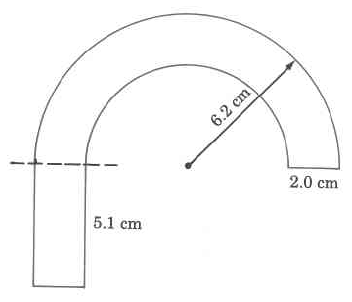
Solution
We notice that we have two semicircles (half circles).
The larger radius is 6.2 cm.
The smaller radius is \(\text{6.2 cm - 2.0 cm = 4.2 cm.}\)
The width of the bottom part of the rectangle is 2.0 cm.
\(\begin{array} {rcll} {\text{Perimeter}} & = & {\text{2.0 cm}} & {} \\ {} & & {\text{5.1 cm}} & {} \\ {} & & {\text{2.0 cm}} & {} \\ {} & & {\text{5.1 cm}} & {} \\ {} & & {(0.5) \cdot (2) \cdot (3.14) \cdot \text{(6.2 com)}} & {\text{Circumference of outer semicircle.}} \\ {} & \ \ + & {\underline{(0.5) \cdot (2) \cdot (3.14) \cdot \text{(4.2 com)}}} & {\text{Circumference of inner semicircle.}} \\ {} & & {} & {\text{6.2 cm - 2.0 cm = 4.2 cm}} \\ {} & & {} & {\text{The 0.5 appears because we want the}} \\ {} & & {} & {\text{perimeter of only half a circle.}} \end{array}\)
\(\begin{array} {rcr} {\text{Perimeter}} & \approx & {\text{2.0 cm}} \\ {} & & {\text{5.1 cm}} \\ {} & & {\text{2.0 cm}} \\ {} & & {\text{5.1 cm}} \\ {} & & {\text{19.468 cm}} \\ {} & & {\underline{\text{+13.188 cm}}} \\ {} & & {\text{48.856 cm}} \end{array}\)
Practice Set B
Find the exact circumference of the circle.
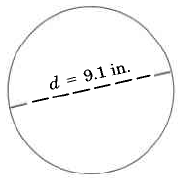
- Answer
-
\(9.1 \pi\) in.
Practice Set B
Find the approximate circumference of the circle.
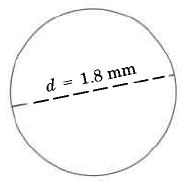
- Answer
-
5.652 mm
Practice Set B
Find the approximate circumference of the circle with radius 20.1 m.
- Answer
-
126.228 m
Practice Set B
Find the approximate outside perimeter of
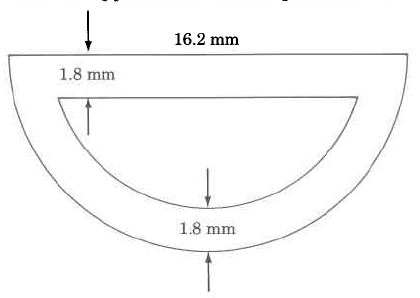
- Answer
-
41.634 mm
Exercises
Find each perimeter or approximate circumference. Use \(\pi = 3.14\).
Exercise \(\PageIndex{1}\)

- Answer
-
21.8 cm
Exercise \(\PageIndex{2}\)
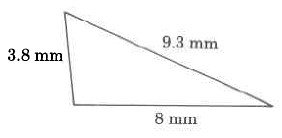
Exercise \(\PageIndex{3}\)
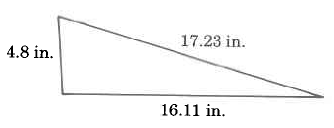
- Answer
-
38.14 inches
Exercise \(\PageIndex{4}\)
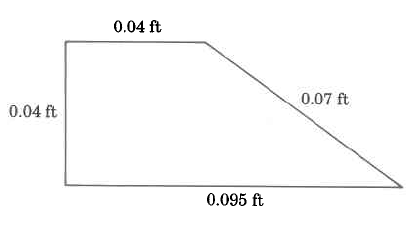
Exercise \(\PageIndex{5}\)
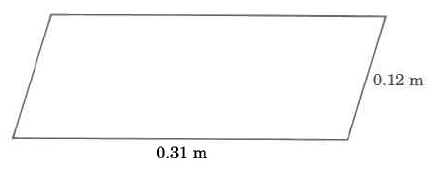
- Answer
-
0.86 m
Exercise \(\PageIndex{6}\)
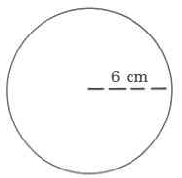
Exercise \(\PageIndex{7}\)
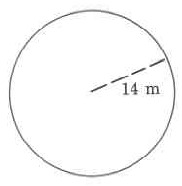
- Answer
-
87.92 m
Exercise \(\PageIndex{8}\)
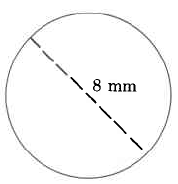
Exercise \(\PageIndex{9}\)
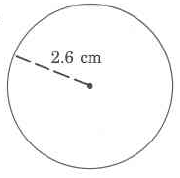
- Answer
-
16.328 cm
Exercise \(\PageIndex{10}\)
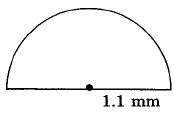
Exercise \(\PageIndex{11}\)
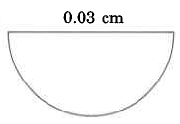
- Answer
-
0.0771 cm
Exercise \(\PageIndex{12}\)
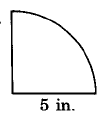
Exercise \(\PageIndex{13}\)
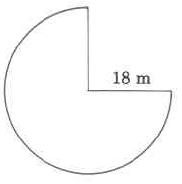
- Answer
-
120.78 m
Exercise \(\PageIndex{14}\)
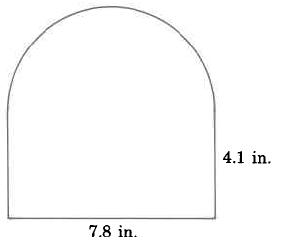
Exercise \(\PageIndex{15}\)

- Answer
-
21.71 inches
Exercise \(\PageIndex{16}\)
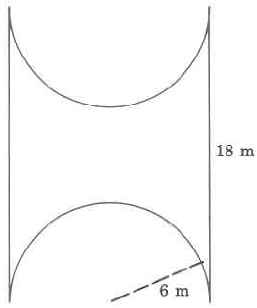
Exercise \(\PageIndex{17}\)
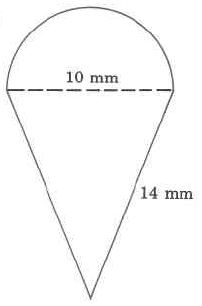
- Answer
-
43.7 mm
Exercise \(\PageIndex{18}\)
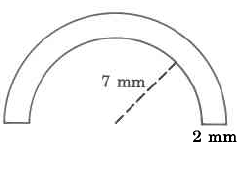
Exercise \(\PageIndex{19}\)
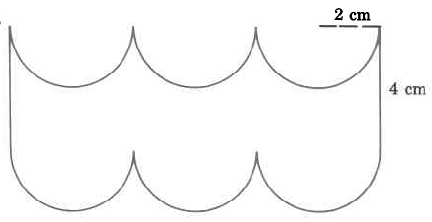
- Answer
-
45.68 cm
Exercise \(\PageIndex{20}\)
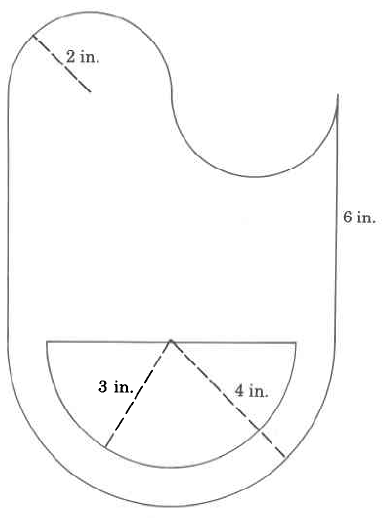
Exercises for Review
Exercise \(\PageIndex{19}\)
Find the value of \(2 \dfrac{8}{13} \cdot \sqrt{10 \dfrac{9}{16}}\).
- Answer
-
8.5 or \(\dfrac{17}{2}\) or \(8 \dfrac{1}{2}\)
Exercise \(\PageIndex{20}\)
Find the value of \(\dfrac{8}{15} + \dfrac{7}{10} + \dfrac{21}{60}\).
Exercise \(\PageIndex{19}\)
Convert \(\dfrac{7}{8}\) to a decimal.
- Answer
-
0.875
Exercise \(\PageIndex{20}\)
What is the name given to a quantity that is used as a comparison to determine the measure of another quantity?
Exercise \(\PageIndex{19}\)
Add 42 min 26 sec to 53 min 40 sec and simplify the result.
- Answer
-
1 hour 36 minutes 6 seconds


